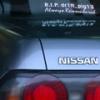Plugs For Rb20 On E85
Announcements
-
Similar Content
-
Latest Posts
-
Photo quality is terrible, but there's a few things on that board that give me suspicions it has some issues. Add to that, I'm hoping the cut and exposed wires under the dash were not exposed or touching each other before you pulled that all apart.
-
By joshuaho96 · Posted
Stories like this are why the immobilizer installs I've done are 100% reversible. No harness cuts. -
update; Replaced oem starter motor with a Jaylec 70-61111 car still didn't start, moved over to the alarm system unraveled the spaghetti checked the solder end points, PCB board burn smell, wiring ends, capacitors, water damage everything looked fine restarted car vroom. restarted 5 to 6 time over an hour started put every thing back together only to not have it start any more. looks like i will be removing the alarm system next weekend.
-
By joshuaho96 · Posted
Lots of people. Could be a lot of things like people have said. Either the heater hose/pipe, the turbo coolant return that wraps around the back of the engine, or a core plug. I have seen all three. If you want me to guess wildly though I would bet it's one of those hoses for the turbo coolant return. Or the brazing/welding for the Y- section has failed. Get a borescope down there to be 100% sure. -
By Dose Pipe Sutututu · Posted
FWIW, I've aerated oil, and cams snapped. You can figure out the rest 🥲
-










Recommended Posts
Create an account or sign in to comment
You need to be a member in order to leave a comment
Create an account
Sign up for a new account in our community. It's easy!
Register a new accountSign in
Already have an account? Sign in here.
Sign In Now